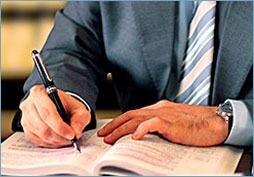How to create a list of assets
As part of your estate planning duties, you will need to create a list of assets to ensure that the process of distributing them to your heirs and beneficiaries goes smoothly after your death.
When making your list, it’s not necessary to list all assets; the important assets that you’ll want to include on the list are those with sentimental as well as financial value. If an asset is one that you want passed on to your beneficiaries, it needs to be on that list.
Setting up a living trust is a valuable estate planning option to make certain that your assets pass to your beneficiaries without the hassle of probate and that your affairs remain private.
Once your trust is created, it is the “owner” of whatever assets you choose to transfer to it, but you retain control of those assets until your death. After your death, your “successor trustee” will distribute those assets per your wishes as outlined in the terms of your trust.

$895 Living Trusts
And $995 for couples. Really, can you afford not to protect you family for the future?
GET DETAILSWhere to start
The first step in how to create a list of assets is to choose your recording system. Digital options such as apps and electronic spreadsheets are convenient and easy to update if and when you need to change the list.
The next step is to decide what items should be included. Common items to include in asset lists include:
- Physical assets: all tangible items of value such as property, vehicles, collectibles, jewelry, etc.
- Financial assets: intangible items such as bank accounts, investments, pensions, credit cards, etc.
- Insurance assets: including life, home, health, mortgage, etc.
Some of your assets may have supporting documentation, such as a title to a car, deed to a house, or insurance policies; including copies of these with your list will make it easier to settle your estate.
Store your asset list in a safe place, ideally with your other estate planning documents. Don’t forget to make periodic updates because assets tend to change during one’s lifetime.
Protecting your assets
In addition to creating a list of assets that are held in your trust, you will also need to consider who you will choose to be your first successor trustee vs second successor trustee. Estate planning is more than just legal documents; it includes sharing useful information with your loved ones. It’s important to communicate with your trustee and family where all your key documents are located and how they can access them.
Don’t need a full trust? Just need to make a change? At the Law Office of David W. Foley, we specialize in creating living trusts and other legal services. Our team will address any questions and/or concerns, then you can be assured that we will review all aspects of your estate to provide you with the best plan to protect your assets and distribute them in the manner that you request.
